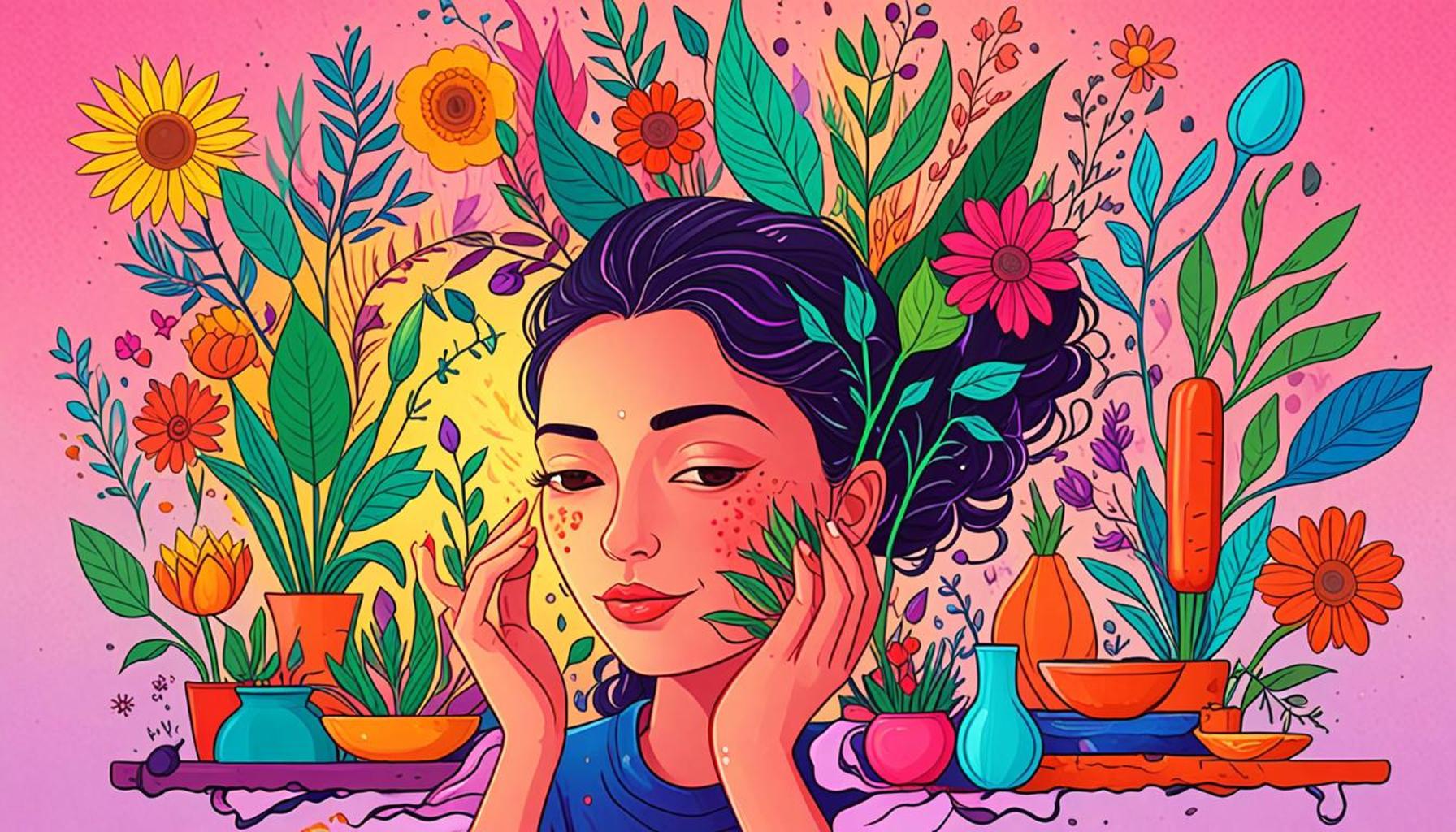Cultivating Clarity: How Minimalism Facilitates Intentional Decision-Making

Understanding Minimalism
In a society characterized by consumerism and the relentless pursuit of more, many individuals are beginning to realize the power of embracing minimalism. This approach is not merely a trend but a significant lifestyle change that promotes intentionality in our lives. Minimalism advocates for a lifestyle that allows individuals to strip away the non-essential in order to focus on what truly matters.
At its core, minimalism is about quality over quantity. It challenges the notion that satisfaction is derived from possessions. Take, for example, a person who decides to live with fewer clothes. Instead of a packed wardrobe, they focus on a few versatile, high-quality pieces that suit their style and needs. This emphasis on meaningful possessions fosters an appreciation for what one has rather than consistent yearning for more.
This philosophy extends beyond physical items to the commitments we make. Each event or task we take on can be examined through a minimalist lens. By evaluating which activities truly align with our goals and values, we can eliminate unnecessary distractions and create space for what enriches our lives.
The Impact of Decluttering
One of the most profound effects of minimalism is the way decluttering can influence our mental state. Imagine a living space free from the chaos of excess—everything has a purpose, and everything is in its place. Research has shown that a clean and organized environment can lead to improved focus and productivity. When distractions are minimized, it becomes easier to engage deeply with our work or hobbies, fostering an environment where creativity can flourish.
- A decluttered home leading to a decluttered mind.
- Reduced distractions allowing for deeper focus.
- Intentional choices based on values rather than obligations.
Moreover, studies highlight that individuals who adopt minimalist practices often experience heightened satisfaction in their decisions. With fewer choices and distractions, decision-making becomes less burdensome, allowing for more profound understanding of our needs and desires.
Living Intentionally
Minimalism encourages individuals to cultivate a life filled with meaning and intention. This can be reflected in various aspects of life, from our daily routines to our personal relationships. For instance, rather than attending every social gathering, minimalism allows individuals to choose events that genuinely resonate with them, leading to more meaningful interactions.
As this approach continues to gain traction in the United States and beyond, many are discovering that less truly can be more. By embracing minimalism, individuals not only find freedom from the chaos surrounding them but also create a clearer path toward living a purposeful life.
In the subsequent sections, we will delve deeper into the specific practices of minimalism that can help cultivate clearer thinking and foster a more intentional, meaningful existence.
DIVE DEEPER: Click here to uncover strategies for intentional living
Embracing a Minimalist Mindset
The journey toward minimalism begins with the cultivation of a minimalist mindset. This mindset acknowledges that less truly can mean more, particularly when it comes to decision-making. When we consciously decide to prioritize quality and significance over quantity, we set the stage for a life filled with clarity. In this fast-paced world, adopting a minimalist mindset can streamline our thoughts and actions, allowing us to align our choices with our core values.
According to a recent study by the American Psychological Association, individuals who embrace minimalism report lower levels of stress and increased satisfaction with their daily decisions. When distractions from material possessions and excessive commitments are minimized, it becomes surprisingly simple to define our priorities. This clarity leads to a more intentional approach, allowing room for growth and self-discovery.
The Role of Mindfulness
Integral to the minimalist journey is the practice of mindfulness. This entails being present in the moment and recognizing our thoughts and behaviors without judgment. By training ourselves to be mindful, we enhance our ability to make intentional choices. Rather than reacting impulsively to external pressures, mindful individuals engage in thoughtful reflection before committing to tasks or decisions.
Mindfulness can be seamlessly integrated into daily routines by adopting simple practices, such as:
- Daily Reflection: Taking a few moments each day to assess what resonated with you allows for greater awareness of your needs.
- Intentional Breathing: Practicing focused breathing can help clear the mind, promoting clarity before making significant decisions.
- Nature Walks: Spending time outdoors reconnects you with nature and fosters a calm, reflective state.
By embracing these mindfulness techniques, we can identify distractions that hinder our decision-making process. Furthermore, engaging fully in each moment fosters an appreciation for our experiences, encouraging us to make choices that align with our values.
Streamlining Choices for Greater Impact
The relationship between minimalism and decision-making is profoundly intertwined with the idea of streamlining choices. When faced with an overload of options, research suggests that we often feel overwhelmed, leading to decision fatigue. In contrast, minimalism encourages a focus on fewer, more meaningful choices, which can lead to greater satisfaction and clarity in our decisions.
This phenomenon is particularly evident in consumer behavior. For instance, when shopping for clothes, some individuals might experience “analysis paralysis” when confronted with endless options. However, a minimalist approach promotes selective choosing, whereby individuals curate their wardrobe based on personal style and functionality. As a result, shopping becomes a focused endeavor rather than a mindless exercise, contributing to overall satisfaction.
These principles extend into our professional lives as well. Whether it’s choosing projects, attending meetings, or taking on additional responsibilities, minimalism encourages us to evaluate each opportunity against our long-term goals. By fostering intentional decision-making through a minimalist perspective, we pave the way for a more purposeful existence.
| Advantages of Minimalism | Impact on Decision-Making |
|---|---|
| Reduces Overwhelm | Less clutter in life leads to clearer thinking and focus on priorities. |
| Increases Awareness | Encourages mindful choices, allowing individuals to recognize what truly matters. |
| Enhances Creativity | A minimalist environment can boost innovative thinking compared to chaotic settings. |
| Fosters Better Relationships | A focus on fewer but more meaningful connections leads to a supportive network. |
The advantages of minimalism extend far beyond the physical decluttering of spaces; they play a crucial role in transforming how we approach our decisions. By reducing overwhelm through a clear environment, individuals can navigate choices with enhanced clarity, leading to more intentional outcomes. Furthermore, minimalism increases awareness, prompting us to consciously prioritize what genuinely aligns with our values and objectives. Moreover, a pared-back lifestyle fuels creativity, as it removes distractions, allowing for innovative thinking to flourish. Ultimately, cultivating clarity through minimalism also leads to improved relationships, where fewer, more profound connections create a truly supportive network that enhances our overall well-being. Each aspect of minimalism contributes to a holistic shift in decision-making, ultimately illustrating the profound impact of simplicity in developing a life led with intention.
DIVE DEEPER: Click here to discover eco-friendly techniques
Building Systems for Simplified Decision-Making
To further enhance the benefits of a minimalist lifestyle, one can implement systems for simplified decision-making. Creating structured frameworks around how decisions are made allows individuals to navigate choices with greater ease and confidence. These systems can act as filters through which options are analyzed, inevitably reducing overwhelm and fostering clarity.
For example, the Two-Priority Method recommends identifying two top priorities for any given scenario—be it daily tasks, long-term goals, or lifestyle choices. This process helps focus attention on what truly matters, steering clear of distractions and less important decisions. When faced with a choice, simply evaluating whether it aligns with these two priorities can provide immediate clarity.
Moreover, decision matrices can also be an effective tool. By listing potential options alongside key criteria, individuals can visually assess choices based on their values, needs, and long-term objectives. This analytical approach not only helps eliminate ambiguity but also leads to more calculated decisions. A 2019 study published in the Journal of Behavioral Decision Making highlights that participants utilizing such frameworks reported feeling more satisfied with their decisions, as they were able to see how their choices reflected their personal aspirations.
The Power of Decluttering Beyond Material Possessions
While most associate minimalism primarily with physical decluttering, the concept extends to emotional and mental decluttering as well. An excess of mental clutter—be it through overwhelming thoughts, unfulfilled commitments, or toxic relationships—undoubtedly complicates decision-making. By establishing boundaries and eliminating emotional baggage, we create a space conducive for clearer thinking.
A practical approach to emotional decluttering could involve journaling, which encourages expression of thoughts and feelings without judgment. Keeping a regular journal allows individuals to process emotions effectively, enabling more rational and thoughtful decisions. Furthermore, entering into new commitments only after a reflection period allows time to assess whether the obligation aligns with personal values. This practice reduces the likelihood of unintentional impulsivity, reinforcing the core tenets of minimalism.
Incorporating Technology Mindfully
The digital world has an undeniable impact on the way we make decisions; however, this can be a double-edged sword. While technology provides vast resources and tools, it also presents a barrage of choices and distractions. A minimalist approach to technology involves selectively integrating digital tools that enhance clarity rather than contribute to confusion.
Applications designed for productivity, such as task managers or note-taking tools, can be valuable resources when used mindfully. By narrowing down the number of apps and devices, one can focus on a few that best suit their needs. A 2020 report by McKinsey & Company found that individuals who curtail digital distractions and streamline their technology usage experience significantly improved focus and decision-making capabilities. Ultimately, cultivating a clutter-free digital environment empowers individuals to make decisions more aligned with their goals.
In a world that often values complexity, minimalism offers a unique remedy. By embracing simpler systems, decluttering our emotional and mental spaces, and harnessing technology with intention, we invite clarity into our decision-making processes. This clarity paves the way for a life filled with greater purpose and satisfaction.
DISCOVER MORE: Click here to simplify your online life
Conclusion
In an age cluttered with choices and distractions, minimalism emerges as a powerful approach to streamline decision-making and enhance our overall clarity. By embracing a minimalist lifestyle, we not only declutter our physical spaces but also liberate our minds from emotional and mental excesses, paving the way for intentions that resonate with our core values. Implementing systems such as priority-driven decision-making methods and analytical tools can refine our thought processes, allowing us to navigate choices with greater ease and confidence.
Moreover, practicing emotional decluttering through techniques like journaling and setting boundaries cultivates an environment that supports rational decision-making. This emotional clarity is crucial, as our choices often stem from our ability to assess personal needs and values accurately. Integrating technology mindfully by minimizing distractions can further bolster our focus, leading to decisions that align with our aspirations.
Ultimately, the journey towards cultivating clarity through minimalism extends beyond mere simplification; it invites deeper self-reflection and intentionality in every aspect of life. By fostering an environment of purpose and calm, individuals are better equipped to make choices that do not merely react to external pressures but instead reflect their genuine desires and long-term goals. As we continue to explore this path, we may find not only improved decision-making but also a more fulfilling existence rooted in clarity and intentionality.


